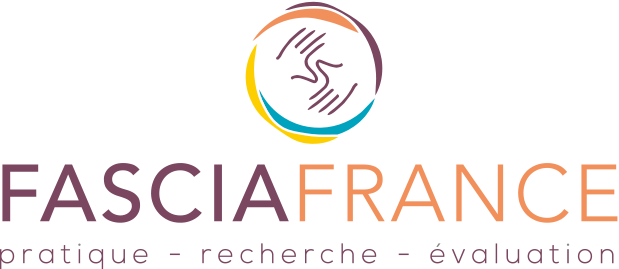Christian Courraud PT, PhD, Anne Lieutaud PhD, Danis Bois PhD
Communication orale (session Phenomenological and Philosophical Aspects). 5th International Fascia Research Congress – 14 et 15 Octobre 2018 – Berlin (Allemagne)
Abstract :
Hypotheses and objectives : Regarding the opportunity for physiotherapists to integrate knowledge about fascia within their clinical practice and to develop a new perspective about somatic disorders [1], we hypothesize that physiotherapists practising DBM Fasciatherapy may have made professional adjustments, and in particular identity shifts [2,3]. This research investigates the existence of identity changes amongst French physiotherapists who practise Fasciatherapy. A quantitative survey was conducted amongst a population of practitioners, with a view to:
- Identifying the impacts of the changes resulting from Fasciatherapy practice;
- Exploring and characterizing the existence of various identity profiles.
Method : We used a self-administered customized questionnaire investigating 5 dimensions: professional characteristics, professional identity features, DBM Fasciatherapy practice modalities, changes in the professional practice and impacts on professional and private life. The questionnaire was forwarded through the internet to a population of 446 physiotherapists trained in Fasciatherapy. We carried out a multivariate analysis to study how such changes could be associated vith varying identity profiles.
Results : 238 questionnaires were completed (53% of the population surveyed).
General characteristics of the data and the population:
They are mostly women (65%), between 30 and 44 years old (44%), preferably using manual therapy techniques (70,2% having a speciality in that field);
45% have started their own practice after the training, 75,6% see their patient base changing, 54,6% have broadened their patient intake (with more chronic conditions) ;
An AFC (Figure 1) followed by the k-means method on 7 identity variables (within parameters of perceived identity, presented identity, projected identity and displayed identity) revealed 3 identity profiles (A: Physiotherapist profile 17,6%, B: Physio-fasciatherapist profile 55,5%, C: Fasciatherapist profile 26,9 %) that appeared significant, characterized and opposed to one another (change to patient base, use of Fasciatherapy modality, Fasciatherapy session, Professionnal and Personal impact). (Table 1)
Conclusion : Practising Fasciatherapy has an impact on the professional practice and identity traits. A significant proportion of the practitioners combine the identities of physiotherapist and fasciatherapist, and few of them remain physiotherapists. These profiles are defined with regards to the statutory, professional and practical characteristics of Fasciatherapy.

